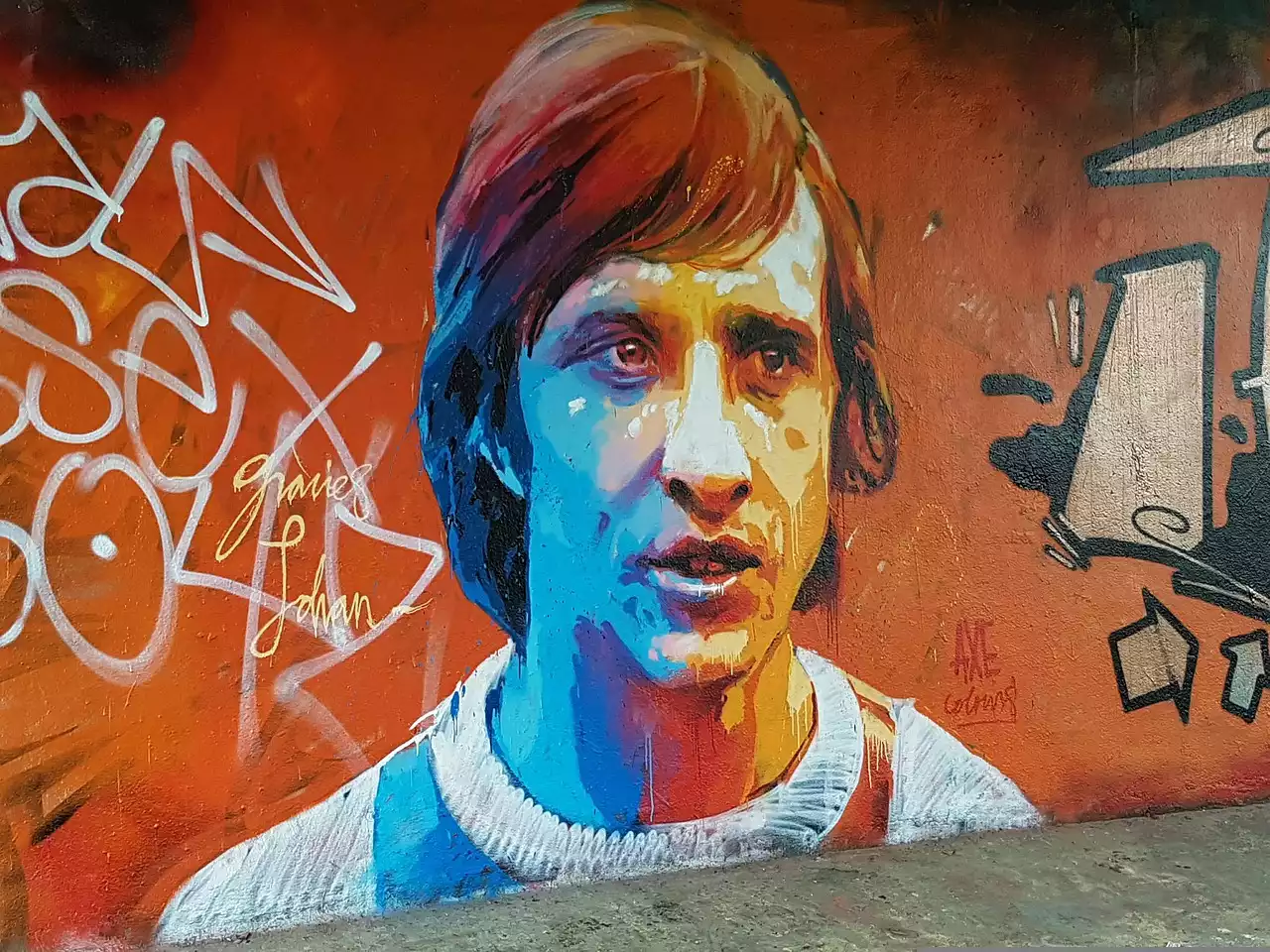The legend of Cruyff: A brief profile of Yohan
Johan Cruyff was born on the 25th of March, 1947 in Groningen, the Netherlands. He was named ‘Yohan’ after the French pop singer Johnny Hallyday. His father was a civil engineer and his mother was a housewife. He started his career at the age of 12 when he joined the local club ‘SV Groningen’. He had an impressive display for the club and was soon scouted by the famous Ajax football club. He made his debut for the club in 1964 at the age of 17. He was one of the key players in the first team and won the league title in 1966. His consistent performance earned him the ‘Dutch Footballer of the Year award in 1967, 1968, and 1969.
The Cruyff Turn and the World Cup
The ‘Cruyff Turn’, a maneuver in which the ball is shifted from one foot to the other as a player turns, was notorious for its high-risk, high-reward strategy. It was a dangerous move because if the ball was lost or mishandled, it could cause complete havoc in the midfield. But this was one of the aspects that made it so thrilling to watch. The ‘Cruyff Turn’ was a crucial part of the Dutch team’s strategy. It was a move that had been in Cruyff’s arsenal since his days as a youth player in the late 1960s. And while the move was not only made famous by him, it was Cruyff who made the ‘Cruyff Turn famous. The move became an enduring symbol of the Dutch team’s football philosophy.
Why is the ‘Cruyff Turn’ so important?
The ‘Cruyff Turn’ had been around for a long time, but it was rarely used in top-level football. The reason for this is often debated. Some say that it was because it was so risky, while others have suggested that referees simply did not understand it. However, Cruyff himself has said that it was because “when you try something new, people think you’re a genius. When you do something people are used to, they think you’re an idiot.” The ‘Cruyff Turn’ was famously used by Cruyff to score against Belgium in the 1982 World Cup. He feinted to move the ball to his right foot, as he had been doing all tournament, but then swiveled on his left foot and fired the ball past the goalkeeper on his right. The goal made Cruyff a hero in his native Netherlands and earned him the captaincy of the national team in the following years.
Why did Cruyff decide to coach the Netherlands team?
Cruyff was appointed head coach of the Dutch national team in 1988, during a World Cup qualifying campaign that had begun badly. He was given the task of improving the team’s performance before the tournament in Italy two years later. The Dutch were widely expected to win the title, partly because they had an exceptional generation of players in their prime and partly because Cruyff was at the helm. But the Dutch had not won a major title since the 1974 World Cup and the feeling was that they had lost their way. Players were excessively protected, strict fitness regimes were ignored and tactical discipline was almost non-existent. Cruyff was brought in to restore order.
Cruijff’s Vision for Dutch Football
Cruijff implemented controversial changes to the way in which the Dutch team trained. His approach was based on the belief that when players became exhausted, they became vulnerable to committing errors. By training his players in a focused and disciplined way, Cruijff was trying to avoid situations in which they would tire themselves out before a match had even begun. He introduced a series of exercises meant to teach his players how to conserve energy while still firing their muscles. Cruijff also had his team play matches against his fellow Dutch coaches, who used their own teams to try and break down Cruijff’s strategies. This put Cruijff’s team under pressure so that by the time the World Cup came around, they had played enough matches to be well prepared for the rigors of the tournament.
Where is Dutch Football Now?
In the decades since their 1990 triumph, the Dutch team has enjoyed a few highs, even if they have not managed to win another World Cup. The most significant developments of recent years, though, have been off the pitch. The 2019-20 season will see the launch of the Eredivisie, a new league that is expected to become one of Europe’s most competitive and lucrative football competitions. The arrival of the Eredivisie is a direct result of the increasing professionalism that Cruijff brought to Dutch football in the late 1980s.
Conclusion
Cruijff’s approach to football was revolutionary, and it has continued to influence the sport ever since. The Cruyff Turn was a move that didn’t suit everyone, but it was a move that made the game more interesting. In a world that is increasingly becoming about defending, it’s nice to see a move that’s worth watching.


 A Look at The Financial Importance of Fans In Columbian Football
A Look at The Financial Importance of Fans In Columbian Football
 Foreign Ownership and Its Impact on Team Success in Coppa Italia
Foreign Ownership and Its Impact on Team Success in Coppa Italia Emerging Talents: Players to Watch in Colombian Categoria Primera A
Emerging Talents: Players to Watch in Colombian Categoria Primera A Zine Zidane and The FIFA World Cup
Zine Zidane and The FIFA World Cup Just Fontaine made a huge impact in Sweden 1958
Just Fontaine made a huge impact in Sweden 1958 FIFA World Cup and Franz Beckenbauer
FIFA World Cup and Franz Beckenbauer Bruno Conti - Spain World Cup 1982
Bruno Conti - Spain World Cup 1982 Bobby Moore was a legend in England in 1966
Bobby Moore was a legend in England in 1966 Archie Gemmill left his mark at the 1978 World Cup
Archie Gemmill left his mark at the 1978 World Cup